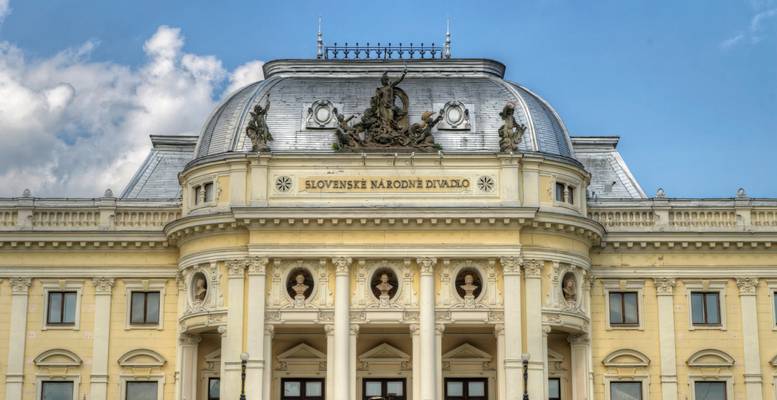Slovakia » Bratislava »
The Slovak National Theatre, Bratislava

0
Located by the Hviezdoslav Square, the Neo-Renaissance building was built in 1885–1886 during the time of Austria-Hungary, based on a design by the Viennese architects Fellner & Helmer, who designed theatre buildings in 10 European countries. It was opened as the City Theatre on September 22, 1886 with the opera Bánk Bán of Ferenc Erkel, which is one of the most important Hungarian operas. As a sign of this event's importance, Kálmán Tisza Hungarian the Prime Minister and his whole government took part in this ceremony. The gala performance was conducted by Ferenc Erkel himself. The original building was designed for 1000 spectators and was illuminated using 800 gas lamps, while the auditorium had a lustre with 64 lights. The interior was decorated with frescos by Pressburg/Pozsony native painter Kornél Spányik and by paintings by Munich artist Leo Lüttgendorf-Leinburg, among others. The City Theatre was hired by German and Hungarian professional theatre companies, but beginning in 1919 (at the creation of Czechoslovakia), it was used by Czech and later also Slovak ensembles. In 1920 it became the Slovak National Theatre.

0
Located by the Hviezdoslav Square, the Neo-Renaissance building was built in 1885–1886 during the time of Austria-Hungary, based on a design by the Viennese architects Fellner & Helmer, who designed theatre buildings in 10 European countries. It was opened as the City Theatre on September 22, 1886 with the opera Bánk Bán of Ferenc Erkel, which is one of the most important Hungarian operas. As a sign of this event's importance, Kálmán Tisza Hungarian the Prime Minister and his whole government took part in this ceremony. The gala performance was conducted by Ferenc Erkel himself. The original building was designed for 1000 spectators and was illuminated using 800 gas lamps, while the auditorium had a lustre with 64 lights. The interior was decorated with frescos by Pressburg/Pozsony native painter Kornél Spányik and by paintings by Munich artist Leo Lüttgendorf-Leinburg, among others. The City Theatre was hired by German and Hungarian professional theatre companies, but beginning in 1919 (at the creation of Czechoslovakia), it was used by Czech and later also Slovak ensembles. In 1920 it became the Slovak National Theatre.